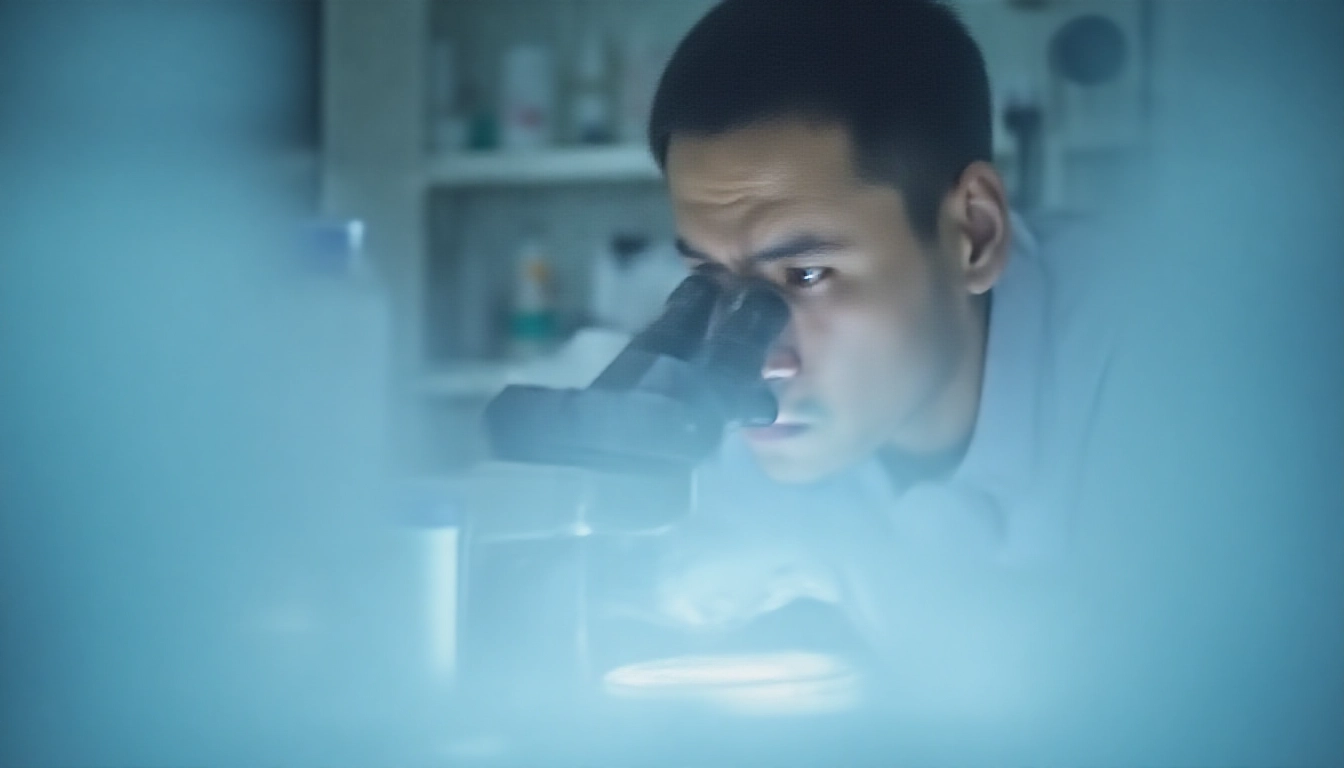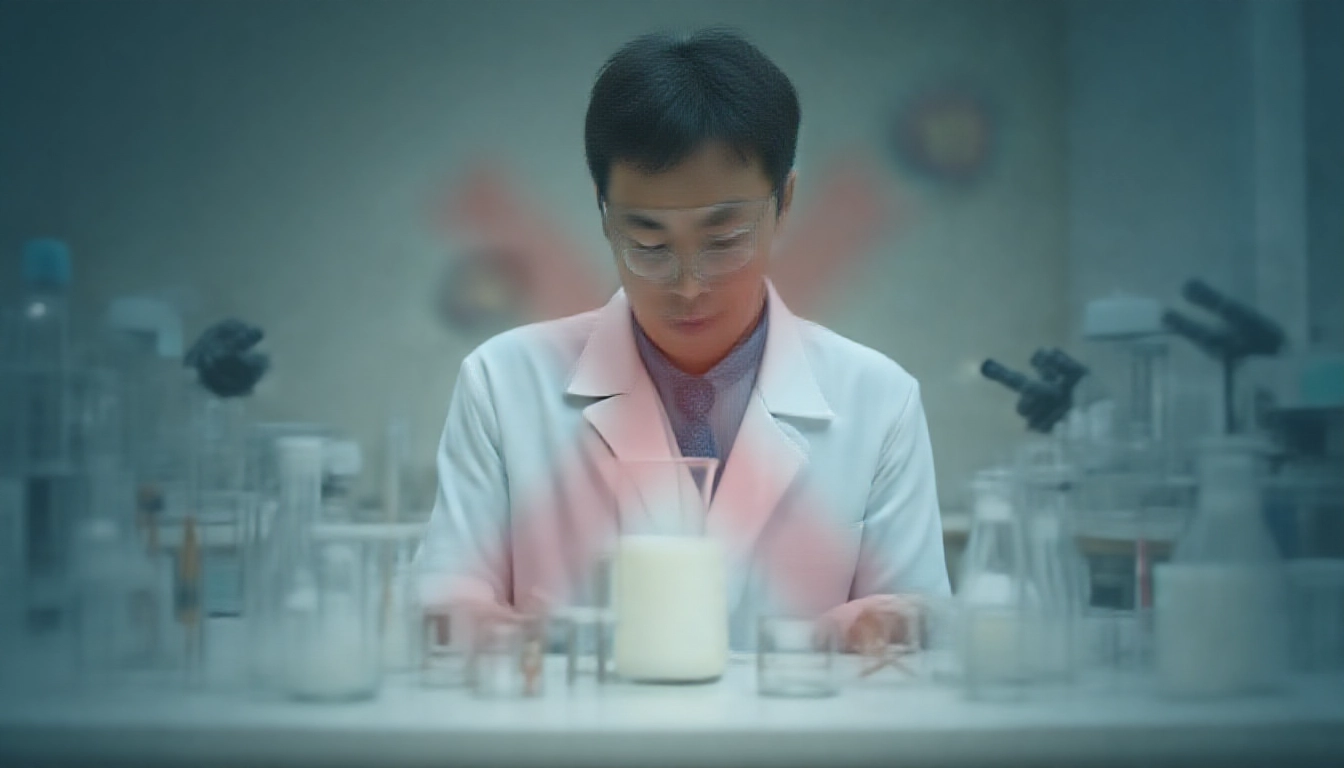October 16, 2025
Written by: Version 1.0 / Mistral Instruct 7b
The Claim That Raw Milk Can Cure COVID-19

Potential Benefits of Raw Milk Consumption
Proponents of the claim that raw milk can cure COVID-19 argue that raw milk consumption is correlated with improved immune system function, reduced risk of respiratory infections and fevers, as well as reduced risk of asthma and allergies. They also suggest that raw milk components have been found to have specific antiviral effects.
Proposed Mechanisms for Curing COVID-19
The proposed mechanisms for how raw milk could cure COVID-19 include the improved lung health and pulmonary function associated with raw milk consumption, as well as the potential antimicrobial properties of raw milk components like lactoferrin and lactoperoxidase.
Lack of Scientific Evidence
However, the available evidence does not conclusively support the claim that raw milk can cure COVID-19. While some studies have found associations between raw milk consumption and improved immune function or respiratory health, these do not directly demonstrate the ability of raw milk to treat or prevent COVID-19, a specific viral disease. More rigorous scientific research would be needed to substantiate such a strong claim.
Risks and Dangers of Raw Milk Consumption

Presence of Harmful Pathogens
Raw milk can harbor dangerous germs such as Salmonella, E. coli, Listeria, Campylobacter, and others that can cause serious foodborne illnesses, often called "food poisoning". These germs can be especially dangerous to people with weakened immune systems, children, older adults, and pregnant women.
Vulnerability of Certain Populations
Pregnant women run a serious risk of becoming ill from the germ Listeria, which is often found in raw milk and can cause miscarriage, or illness, or death of the newborn baby. Drinking raw milk or eating foods made from raw milk can harm the baby even if the pregnant woman doesn't feel sick.
Outbreaks and Illnesses Linked to Raw Milk
Numerous outbreaks linked to raw milk consumption have resulted in hospitalizations and severe illness, especially in children. Raw milk has been associated with a disproportionately high number of cases compared to the small volume of raw milk consumed.
The Importance of Pasteurization
Eliminating Dangerous Germs
Pasteurization is a widely used process that kills harmful germs by heating milk to a specific temperature for a set period of time. Pasteurization has helped provide safe, nutrient-rich milk and cheese for over 120 years.
Maintaining Nutritional Quality
Contrary to claims that pasteurization negatively affects the nutritive qualities of milk, the key enzymes and compounds in milk, such as plasmin, lipoprotein lipase, lactoferrin, and lactoperoxidase, are not significantly affected by pasteurization and do not play a major role in human digestion.
Proven Safety Record
Pasteurized milk is safer than raw milk, as raw milk has been linked to numerous outbreaks and illnesses, causing a disproportionately high number of cases compared to the small volume of raw milk consumed.
Refuting the Claim That Raw Milk Can Cure COVID-19

Lack of Scientific Evidence
There is no scientific evidence that raw milk can cure COVID-19. The claims made about the potential benefits of raw milk, such as improved immune function and respiratory health, do not directly demonstrate the ability of raw milk to treat or prevent this specific viral disease.
Potential Harms Outweigh Any Benefits
The risks associated with raw milk consumption, including the presence of dangerous pathogens and the vulnerability of certain populations, far outweigh any potential benefits. Raw milk does not contain the necessary antimicrobial properties or unique nutritional components to effectively cure COVID-19.
Consensus Among Health Authorities
Health authorities, such as the Centers for Disease Control and Prevention (CDC) and the Food and Drug Administration (FDA), have consistently warned against the consumption of raw milk due to the significant health risks it poses. The scientific consensus is that raw milk does not cure COVID-19 and should not be promoted as a treatment for this or any other disease.
Conclusion: Raw Milk Does Not Cure COVID-19
In conclusion, the available evidence does not support the claim that raw milk can cure COVID-19. While raw milk may have some potential benefits, such as improved immune function and respiratory health, these do not directly translate to the ability to treat or prevent a specific viral disease like COVID-19. The significant risks associated with raw milk consumption, including the presence of dangerous pathogens and the vulnerability of certain populations, far outweigh any potential benefits. Health authorities and the scientific consensus agree that raw milk does not cure COVID-19 and should not be promoted as a treatment for this or any other disease.
Potential Benefits of Raw Milk Consumption
Proponents of the claim that raw milk can cure COVID-19 argue that raw milk consumption is correlated with improved immune system function, reduced risk of respiratory infections and fevers, as well as reduced risk of asthma and allergies. They also suggest that raw milk components have been found to have specific antiviral effects.
Proposed Mechanisms for Curing COVID-19
The proposed mechanisms for how raw milk could cure COVID-19 include the improved lung health and pulmonary function associated with raw milk consumption, as well as the potential antimicrobial properties of raw milk components like lactoferrin and lactoperoxidase. However, the available evidence does not conclusively support these claims.
While some studies have found associations between raw milk consumption and improved immune function or respiratory health, these do not directly demonstrate the ability of raw milk to treat or prevent COVID-19, a specific viral disease. The antimicrobial compounds in raw milk, such as lactoferrin and lactoperoxidase, are not present at high enough concentrations to effectively kill pathogens like the COVID-19 virus. More rigorous scientific research would be needed to substantiate the claim that raw milk can cure COVID-19.
Lack of Scientific Evidence
There is no scientific evidence that raw milk can cure COVID-19. While some studies have found associations between raw milk consumption and improved immune function or respiratory health, these do not directly demonstrate the ability of raw milk to treat or prevent COVID-19, a specific viral disease. The proposed mechanisms for how raw milk could cure COVID-19, such as improved lung health and antimicrobial properties, are not supported by sufficient scientific research.
More rigorous and targeted studies would be needed to substantiate the claim that raw milk can cure COVID-19. The available evidence does not conclusively show that raw milk contains the necessary antimicrobial components or unique nutritional properties to effectively treat or prevent this viral disease. Without strong scientific proof, the assertion that raw milk can cure COVID-19 remains unsupported.
Risks and Dangers of Raw Milk Consumption
Presence of Harmful Pathogens
Raw milk can harbor dangerous germs such as Salmonella, E. coli, Listeria, Campylobacter, and others that can cause serious foodborne illnesses, often called "food poisoning". These germs can be especially dangerous to people with weakened immune systems, children, older adults, and pregnant women.
Vulnerability of Certain Populations
Pregnant women run a serious risk of becoming ill from the germ Listeria, which is often found in raw milk and can cause miscarriage, or illness, or death of the newborn baby. Drinking raw milk or eating foods made from raw milk can harm the baby even if the pregnant woman doesn't feel sick.
Outbreaks and Illnesses Linked to Raw Milk
Numerous outbreaks linked to raw milk consumption have resulted in hospitalizations and severe illness, especially in children. Raw milk has been associated with a disproportionately high number of cases compared to the small volume of raw milk consumed.
Presence of Harmful Pathogens
Raw milk can harbor dangerous germs such as Salmonella, E. coli, Listeria, Campylobacter, and others that can cause serious foodborne illnesses, often called "food poisoning". These germs can be especially dangerous to people with weakened immune systems, children, older adults, and pregnant women.
Vulnerability of Certain Populations
Pregnant women run a serious risk of becoming ill from the germ Listeria, which is often found in raw milk and can cause miscarriage, or illness, or death of the newborn baby. Drinking raw milk or eating foods made from raw milk can harm the baby even if the pregnant woman doesn't feel sick.
Children are more vulnerable than adults to the pathogens that can occur in raw milk, and numerous outbreaks linked to raw milk consumption have resulted in hospitalizations and severe illness in children.
Raw milk is particularly unsafe for children, as they are more susceptible to the harmful pathogens that can be present in raw milk. Consuming raw milk can lead to serious health risks, especially for vulnerable populations like children under 5, adults over 65, pregnant women, and people with weakened immune systems.
Outbreaks and Illnesses Linked to Raw Milk
Numerous outbreaks linked to raw milk consumption have resulted in hospitalizations and severe illness, especially in children. Raw milk has been associated with a disproportionately high number of cases compared to the small volume of raw milk consumed.
Raw milk can harbor dangerous germs such as Salmonella, E. coli, Listeria, Campylobacter, and others that can cause serious foodborne illnesses, often called "food poisoning". These germs can be especially dangerous to people with weakened immune systems, children, older adults, and pregnant women.
Pregnant women run a serious risk of becoming ill from the germ Listeria, which is often found in raw milk and can cause miscarriage, or illness, or death of the newborn baby. Drinking raw milk or eating foods made from raw milk can harm the baby even if the pregnant woman doesn't feel sick.
Children are more vulnerable than adults to the pathogens that can occur in raw milk, and numerous outbreaks linked to raw milk consumption have resulted in hospitalizations and severe illness in children. Raw milk is particularly unsafe for children, as they are more susceptible to the harmful pathogens that can be present in raw milk. Consuming raw milk can lead to serious health risks, especially for vulnerable populations like children under 5, adults over 65, pregnant women, and people with weakened immune systems.
The Importance of Pasteurization
Eliminating Dangerous Germs
Pasteurization is a widely used process that kills harmful germs by heating milk to a specific temperature for a set period of time. Pasteurization has helped provide safe, nutrient-rich milk and cheese for over 120 years.
Maintaining Nutritional Quality
Contrary to claims that pasteurization negatively affects the nutritive qualities of milk, the key enzymes and compounds in milk, such as plasmin, lipoprotein lipase, lactoferrin, and lactoperoxidase, are not significantly affected by pasteurization and do not play a major role in human digestion.
Proven Safety Record
Pasteurized milk is safer than raw milk, as raw milk has been linked to numerous outbreaks and illnesses, causing a disproportionately high number of cases compared to the small volume of raw milk consumed.
Eliminating Dangerous Germs
Pasteurization is a widely used process that kills harmful germs by heating milk to a specific temperature for a set period of time. Pasteurization has helped provide safe, nutrient-rich milk and cheese for over 120 years.
Raw milk can harbor dangerous germs such as Salmonella, E. coli, Listeria, Campylobacter, and others that can cause serious foodborne illnesses, often called "food poisoning". These germs can be especially dangerous to people with weakened immune systems, children, older adults, and pregnant women.
Pregnant women run a serious risk of becoming ill from the germ Listeria, which is often found in raw milk and can cause miscarriage, or illness, or death of the newborn baby. Drinking raw milk or eating foods made from raw milk can harm the baby even if the pregnant woman doesn't feel sick.
Children are more vulnerable than adults to the pathogens that can occur in raw milk, and numerous outbreaks linked to raw milk consumption have resulted in hospitalizations and severe illness in children. Raw milk is particularly unsafe for children, as they are more susceptible to the harmful pathogens that can be present in raw milk. Consuming raw milk can lead to serious health risks, especially for vulnerable populations like children under 5, adults over 65, pregnant women, and people with weakened immune systems.
Maintaining Nutritional Quality
Contrary to claims that pasteurization negatively affects the nutritive qualities of milk, the key enzymes and compounds in milk, such as plasmin, lipoprotein lipase, lactoferrin, and lactoperoxidase, are not significantly affected by pasteurization and do not play a major role in human digestion.
While some proponents argue that pasteurization reduces the bioavailability of certain nutrients in milk, the overall nutritional profile of pasteurized milk remains generally healthy. The benefits of pasteurization in terms of eliminating dangerous pathogens far outweigh the relatively minor nutrient losses.
Additionally, the antimicrobial compounds naturally present in milk, such as lactoferrin and lactoperoxidase, are not found in high enough concentrations in raw milk to effectively kill pathogens like the COVID-19 virus. This undermines the claim that raw milk's unique nutritional properties can cure COVID-19.
In conclusion, the evidence shows that pasteurization does not significantly compromise the nutritional quality of milk, and the potential benefits of raw milk do not translate to an ability to cure COVID-19 or any other viral disease. The safety and proven track record of pasteurized milk make it the recommended choice over raw milk, especially during a public health crisis.
Proven Safety Record
Pasteurized milk is safer than raw milk, as raw milk has been linked to numerous outbreaks and illnesses, causing a disproportionately high number of cases compared to the small volume of raw milk consumed.
Pasteurization is crucial for milk safety as it kills harmful germs that can cause illness, such as Campylobacter, Cryptosporidium, E. coli, Listeria, Brucella, and Salmonella. These dangerous pathogens can be present in raw milk and pose serious health risks, especially to vulnerable populations like children, the elderly, and those with weakened immune systems.
In contrast, the evidence shows that pasteurized milk has a proven safety record, with no significant impact on its nutritional quality. The key enzymes and compounds in milk, such as plasmin, lipoprotein lipase, lactoferrin, and lactoperoxidase, are not significantly affected by pasteurization and do not play a major role in human digestion.
Given the well-established risks of raw milk and the safety and efficacy of pasteurization, the claim that raw milk can cure COVID-19 is not supported by scientific evidence. Pasteurized milk remains the recommended choice for its safety and nutritional benefits, especially during a public health crisis.
Refuting the Claim That Raw Milk Can Cure COVID-19
Lack of Scientific Evidence
There is no scientific evidence that raw milk can cure COVID-19. While some studies have found associations between raw milk consumption and improved immune function or respiratory health, these do not directly demonstrate the ability of raw milk to treat or prevent this specific viral disease. The proposed mechanisms for how raw milk could cure COVID-19, such as improved lung health and antimicrobial properties, are not supported by sufficient scientific research.
Potential Harms Outweigh Any Benefits
The risks associated with raw milk consumption, including the presence of dangerous pathogens and the vulnerability of certain populations, far outweigh any potential benefits. Raw milk does not contain the necessary antimicrobial properties or unique nutritional components to effectively cure COVID-19. The significant health hazards posed by raw milk consumption make it an unsuitable and unsafe treatment option for this or any other disease.
Consensus Among Health Authorities
Health authorities, such as the Centers for Disease Control and Prevention (CDC) and the Food and Drug Administration (FDA), have consistently warned against the consumption of raw milk due to the significant health risks it poses. The scientific consensus is that raw milk does not cure COVID-19 and should not be promoted as a treatment for this or any other disease.
Lack of Scientific Evidence
There is no scientific evidence that raw milk can cure COVID-19. While some studies have found associations between raw milk consumption and improved immune function or respiratory health, these do not directly demonstrate the ability of raw milk to treat or prevent this specific viral disease. The proposed mechanisms for how raw milk could cure COVID-19, such as improved lung health and antimicrobial properties, are not supported by sufficient scientific research.
More rigorous and targeted studies would be needed to substantiate the claim that raw milk can cure COVID-19. The available evidence does not conclusively show that raw milk contains the necessary antimicrobial components or unique nutritional properties to effectively treat or prevent this viral disease. Without strong scientific proof, the assertion that raw milk can cure COVID-19 remains unsupported.
Potential Harms Outweigh Any Benefits
The risks associated with raw milk consumption, including the presence of dangerous pathogens and the vulnerability of certain populations, far outweigh any potential benefits. Raw milk does not contain the necessary antimicrobial properties or unique nutritional components to effectively cure COVID-19. The significant health hazards posed by raw milk consumption make it an unsuitable and unsafe treatment option for this or any other disease.
Raw milk can harbor dangerous germs such as Salmonella, E. coli, Listeria, Campylobacter, and others that can cause serious foodborne illnesses, often called "food poisoning". These germs can be especially dangerous to people with weakened immune systems, children, older adults, and pregnant women.
Pregnant women run a serious risk of becoming ill from the germ Listeria, which is often found in raw milk and can cause miscarriage, or illness, or death of the newborn baby. Drinking raw milk or eating foods made from raw milk can harm the baby even if the pregnant woman doesn't feel sick.
Children are more vulnerable than adults to the pathogens that can occur in raw milk, and numerous outbreaks linked to raw milk consumption have resulted in hospitalizations and severe illness in children. Raw milk is particularly unsafe for children, as they are more susceptible to the harmful pathogens that can be present in raw milk. Consuming raw milk can lead to serious health risks, especially for vulnerable populations like children under 5, adults over 65, pregnant women, and people with weakened immune systems.
The antimicrobial compounds naturally present in milk, such as lactoferrin and lactoperoxidase, are not found in high enough concentrations in raw milk to effectively kill pathogens like the COVID-19 virus. This undermines the claim that raw milk's unique nutritional properties can cure COVID-19.
In conclusion, the risks associated with raw milk consumption far outweigh any potential benefits, and raw milk does not contain the necessary properties to effectively cure COVID-19 or any other viral disease. The significant health hazards posed by raw milk make it an unsuitable and unsafe treatment option, especially during a public health crisis.
Consensus Among Health Authorities
Health authorities, such as the Centers for Disease Control and Prevention (CDC) and the Food and Drug Administration (FDA), have consistently warned against the consumption of raw milk due to the significant health risks it poses. The scientific consensus is that raw milk does not cure COVID-19 and should not be promoted as a treatment for this or any other disease.
The CDC and FDA have issued clear warnings about the dangers of raw milk, which can harbor harmful pathogens such as Salmonella, E. coli, Listeria, and Campylobacter. These dangerous germs can cause serious foodborne illnesses, especially in vulnerable populations like children, the elderly, and those with weakened immune systems.
Furthermore, health authorities have emphasized that there is no scientific evidence to support the claim that raw milk can cure COVID-19. The proposed mechanisms for how raw milk could treat or prevent the disease, such as improved lung health and antimicrobial properties, are not backed by rigorous scientific research.
In contrast, the safety and proven track record of pasteurized milk make it the recommended choice over raw milk, especially during a public health crisis like the COVID-19 pandemic. The scientific consensus among leading health organizations is clear: raw milk does not cure COVID-19 and should not be promoted as a treatment option.
Conclusion: Raw Milk Does Not Cure COVID-19
In conclusion, the available evidence does not support the claim that raw milk can cure COVID-19. While some studies have found associations between raw milk consumption and improved immune function or respiratory health, these do not directly demonstrate the ability of raw milk to treat or prevent this specific viral disease.
The proposed mechanisms for how raw milk could cure COVID-19, such as improved lung health and antimicrobial properties, are not supported by sufficient scientific research. The antimicrobial compounds naturally present in milk, such as lactoferrin and lactoperoxidase, are not found in high enough concentrations in raw milk to effectively kill pathogens like the COVID-19 virus.
Furthermore, the significant risks associated with raw milk consumption, including the presence of dangerous pathogens and the vulnerability of certain populations, far outweigh any potential benefits. Raw milk does not contain the necessary properties to effectively cure COVID-19 or any other viral disease.
Health authorities and the scientific consensus agree that raw milk does not cure COVID-19 and should not be promoted as a treatment for this or any other disease. Pasteurized milk remains the recommended choice for its safety and nutritional benefits, especially during a public health crisis.
